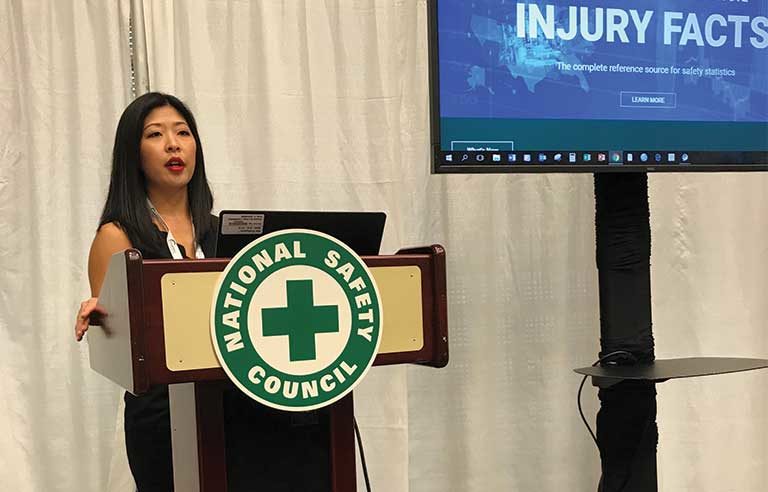NSC panel discussion covers addition to Injury Facts, TRIR

Houston — Pointing out that on-the-job fatalities rose 7.3 percent in 2016, the National Safety Council on Tuesday debuted the workplace section of it Injury Facts database at the 2018 NSC Congress & Expo to “help people understand the biggest risks to their safety and help employers understand where to focus their risk management efforts.”
In 2016, workplace deaths increased to 5,190 from 4,836 in the previous year, marking a third straight annual increase, according to an NSC analysis.
“We are eight times safer at work than we are at home, but the data reminds us that our workplaces could still be much safer,” Ken Kolosh, manager of statistics at NSC, said in an Oct. 23 press release. “The numbers underscore the need for public awareness.”
Noteworthy safety trends and offerings highlighted in the new section include:
- Women are “disproportionately impacted” by nonfatal workplace violence, with 70 percent of assault-related injuries in the workplace occurring to females. The number of women injured as a result of a work-related assault totaled 11,770 in 2016 – a 68 percent increase since 2011.
- The construction industry continues to experience the most worker deaths, leading all industries with 959 fatalities in 2016. Transportation and warehousing was second with 764.
- Overdoses from the nonmedical use of drugs or alcohol on the job increased to 217 in 2016 from 165 in 2015, a 32 percent increase.
- Deaths among workers 55 or older totaled 1,848 – a 9.9 percent increase.
Kolosh was part of an NSC panel discussion along with President and CEO Deborah A.P Herman and Joy Inouye, research associate for the Campbell Institute at the National Safety Council.
The Injury Facts website, which has replaced NSC’s long-published annual print report, “allows you to explore different topics very naturally,” Kolosh said. “Talking to safety professionals, it creates all these conversations.”
The website’s workplace section allows safety professionals to examine workplace injury rates by topics such as falls, fatigue, forklifts, assault and more. In addition, injury-related costs can be examined, along with injury and fatality rate profiles by industry. Users also can segment data.
Kolosh encouraged safety professionals from any sized organization to use the site’s Incident Rate Calculator as a benchmark and for the convenience of the data available.
“When we had the book, we published it once a year,” he said. “By the time we got it back from the printer, parts of it were already out of date. We’re going to be maintaining this website throughout the year and we’ll be able to respond to emerging issues. It’s going to be much more timely and much more up to date.”
Inouye said the Campbell Institute recently published a white paper, Serious Injury and Fatality Prevention: Perspectives and Practices.
“In the past 20 years, the U.S. has seen enormous gains when it comes to total recordable incident rate,” Inouye said.
Since 1999, TRIR has dropped to less than 3.0 incidents per 200,000 working hours in 2016 from 8.5. However, fatalities are trending upward, according to Inouye, who is working with Campbell Institute members on how improvements can be made in both fatal and nonfatal incidents.
Six Campbell Institute members were interviewed for the white paper about their definitions of SIF potential and serious injury.
“This is something they’ve been closely focused on the last few years,” Inouye said.
Hersman said NSC remains strongly committed to ensuring workers are safe on the job, on the roads and at home.
“We’re seeing some things that are giving us pause,” Hersman said. “Things like speed limits increasing and certain laws being repealed or regulations being rolled back or slowed down that concern us. We’re seeing the fatality numbers going up. We want to double down and be more aggressive addressing these issues, not relax.”

